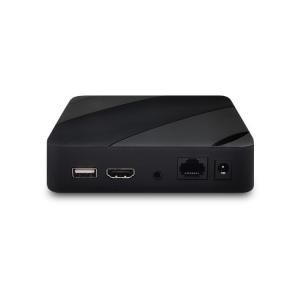

Add to Cart
Multi Protocol Support RTSP Linux 4 . 9 Version Software Upgrade M3u List Iptv
M3U List IPTV Description:
IP Datacast (IPDC) is an IP-based service used to deliver video, audio, graphics and data via
virtually any broadband delivery system. The data is encapsulated in an IP (Internet Protocol)
packet data stream. If the data is TV content it is also called IPTV.
M3U List IPTV Specification:
-O.S:Linux 4.9
-CPU Frequency:1500DMIPS 32bit
-Flash:16MB
-DDR3:1Gb=1024Mb=128MB
-IPTV protocol:HLS(M3U8),UDP,RTP,RTSP,RTMP,HTTP
-Video Decoder:HEVC/H.265,H.264,MPEG-4,H.263 P3,AVS,AVS plus,MPEG-2,MPEG-1
- Wifi Module(optional):802.11 for 2.4GHZ band
Application With M3U List IPTV:
- Cable TV Operator
- Content Provider
- Personal Usage
Features of M3U List IPTV:
- High performance 32-bit CK610M CPU integrates 16Kbytes
instruction cache and
16Kbytes data cache. Provides up to 1500 DMIPS. JTAG debug supported
- HDR video decoding and display Supported
- All of the PAL and NTSC analog TV standards supported
Advantages for M3U List IPTV:
1. We have our own professional R&D team,so that can provide customers prompt and professional support.
2. Small quantity can accept(no matter how much quantity do you need,we can support as starting).
3. Customization service for hardware/software/package etc.
4. Flexible business way(CKD/SKD/CBU etc.)
5. Flexible Manufacturing Capabilities
FAQ:
1. What is a set-top box?
A set top box is a device that connects a TV set to an external signal source. It converts the source
signal to TV content and displays it on the TV set. The signal can come from cable cables, satellite
dishes, broadband networks, and terrestrial broadcasts. The content received by the set top box is
not only the image and sound that analog TV can provide, but also the ability to receive data content,
including electronic program guides, Internet pages, subtitles, etc.
2.What are the features of a set-top box?
There are electronic program guide,favorites,timer,controls on the box,remote controls that work with
other TVs,parental locks etc.
3.How does a set-top box work?
Set top boxes allow a user to choose from specific providers, and then filter down to the video content
they wish to consume. In other words, the box would transmit numerous channels to an auxiliary channel
on the television. Many early Set Top Boxes also included a decoder for pay per view and premium channels.
4.What are the different types of set top boxes?
A set top box (STB), also colloquially known as a cable box or receiver and historically television decoder,
is an information appliance device that generally contains a TV tuner input and displays output to a television
set and an external source of signal, turning the source signal into content in a form that can then be displayed
on the television screen or other display device. They are used in cable television, satellite television, and
over-the-air television systems as well as other uses.
5.What is the difference between a set-top box and a streaming device?
A set-top box and a streaming device are both used to stream TV shows, movies, and other content on a TV,
but they have some differences:
Technology: Set-top boxes are typically designed to work with cable or satellite TV services, while streaming
devices are designed to work with internet services.
Connectivity: Set-top boxes require a physical connection to a cable or satellite provider, while streaming devices
connect to the internet wirelessly.
Content: Set-top boxes typically offer access to a wider range of TV channels and live sports, while streaming
devices focus more on on-demand content like movies and TV shows.
Price: Set-top boxes are typically more expensive than streaming devices, but they often offer more features
and access to additional content.
